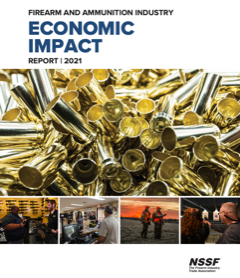
|
The total economic impact of the firearm and ammunition industry in the United States increased from $19.1 billion in 2008 to $63.5 billion in 2019, a 232 percent increase, while the total number of full-time equivalent jobs rose from approximately 166,000 to over 342,330, a 106 percent increase in that period, according to a report released by the National Shooting Sports Foundation®, the industry’s trade association.
On a year-over-year basis, the industry’s economic impact rose from $60 billion in 2019, to $63.5 billion. Total jobs increased by more than 10,000 in the same period, from nearly 332,000, to over 342,330. The broader impact of the industry throughout the economy, supports and generates business for firms seemingly unrelated to firearms, at a time when every job in America counts. These are real people, with real jobs, working in industries as varied as banking, retail, accounting, metal working and printing among others.
The firearm and ammunition industry paid nearly $7 billion in business taxes, including property, income and sales-based levies.
“The firearm industry has demonstrated amazing resilience and these economic impact figures are the result of every man and woman who comprise our industry,” said Joe Bartozzi, NSSF President and CEO. “These professionals are the reason our industry continues to grow and contribute to our communities, states and nation. These workers and our member companies produce the highest quality firearms and ammunition that over a hundred million law-abiding Americans rely upon to exercise their right to keep and bear arms and safely enjoy the recreational shooting sports. This growth equals more jobs that add to our local economies, averaging $56,400 in wages and benefits. Since 2008 we increased federal tax payments by 170 percent, Pittman-Robertson excise taxes that support wildlife conservation by 89 percent and state business taxes by 125 percent.”
The Firearm and Ammunition Industry Economic Impact Report provides a state-by-state breakdown of job numbers, wages and output covering direct, supplier and induced employment, as well as federal excise taxes paid. Access the full report here.